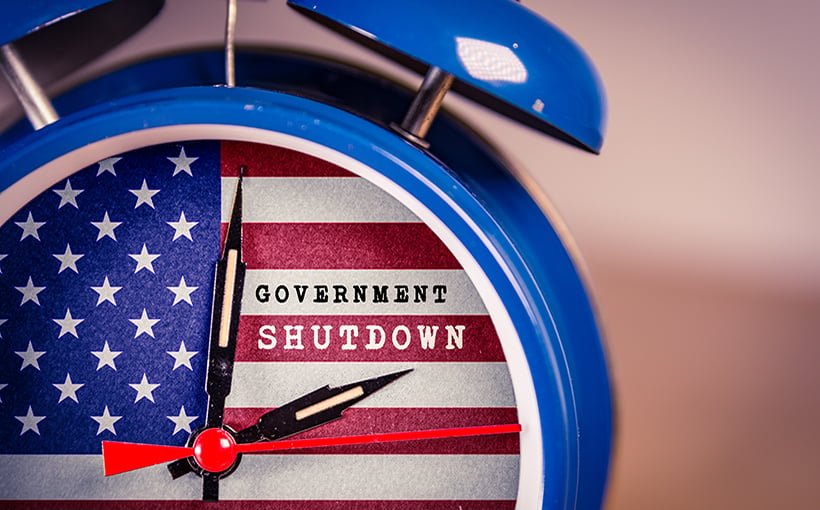

As of this writing (Oct. 9), the U.S. government has entered its ninth shutdown day. Congress remains deadlocked concerning the votes needed to reopen the government.
The result, so far, has been furloughs for Fed employees and air travel issues as Congress remains deadlocked on a funding plan.
The Good News: No Direct CRE Impact
According to a recent Marcus & Millichap video, “Will the Federal Shutdown Impact CRE?”, government shutdowns generally don’t impact commercial real estate property operations. Additionally, “Financing is still available, even through Fannie Mae and Freddie Mac, and transactions still close,” said Marcus & Millichap’s Senior Vice President John Chang in the video.
Chang explained that the one exception might be Department of Housing and Urban Development (HUD) payments. However, a delay or impact in that area could be an issue only if the shutdown lasts more than 30 days.
The Not-So-Good News: Other Areas Impacted
Closing government agencies while Congress remains in a stalemate will have an economic impact, depending on the duration of the impasse. Chang pointed out that the current shutdown could:
- Put downward pressure on economic growth
- Delay the release of data necessary for decision-making
- Influence business and investor actions
Potential Economic Impacts
The last two government shutdowns offer some historical information to consider.
The 2018-2019 partial shutdown lasted 35 days, resulting in a furlough of about 380,000 government employees. The estimated economic impact was $11 billion, though an estimated $8 billion was deferred and recaptured once the government reopened.
The 2013 full shutdown lasted 16 days, with approximately 850,000 Feds furloughed. This resulted in an estimated $20 billion loss in GDP.
The current shutdown could result in the furlough of up to 750,000 government employees. According to Chang, the situation could reduce GDP growth by 15 to 20 basis points per week, depending on how long it persists.
Lack of Data
The closure of several government agencies also means that much-needed data, such as employment reports and inflation information, will not be released. The Federal Reserve relies on this intel to make decisions on the Effective Federal Funds Rate.
“The highly anticipated rate cuts for October and December will likely go through,” Chang said. “But the Fed might have to make decisions without being able to consider important economic information.”
The “R” Word — Again
The recent Bureau of Labor Statistics data indicated a softening job market, accompanied by an increase in government layoffs. “That could ultimately weigh on retail sales, home sales, health information and a variety of other factors that influence commercial real estate demand,” Chang explained.
Furthermore, given the current fragile employment situation, an ongoing shutdown could lead to a recession. Chang said that much will depend on the shutdown’s length and whether it puts pressure on business and consumer confidence levels.
Back to the Good News—Kind Of
If there’s any ray of light in the current scenario, it’s that household balance sheets are still in good shape. Savings remain strong, and debt-to-income ratios remain relatively low.
This led Chang to suggest that, while the shutdown is generating buzz and capturing headlines, “the long-term impact should be minimal. At the end of the day, investors should focus on the long game.”


